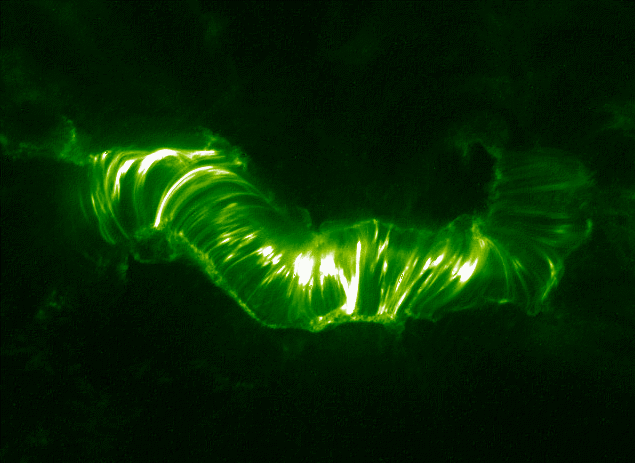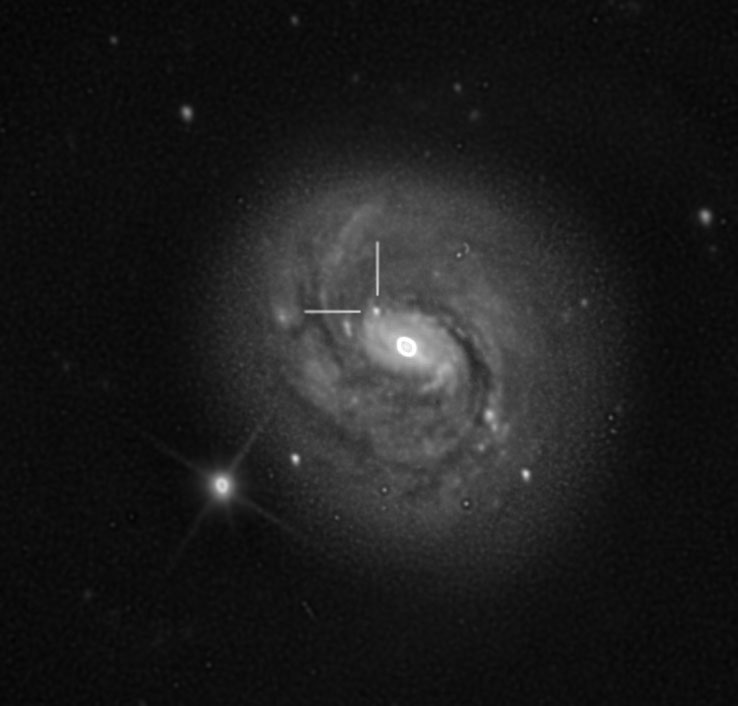|
Multi-messenger Astronomy
Multi-messenger astronomy is the coordinated observation and interpretation of multiple signals received from the same astronomical event. Many types of cosmological events involve complex interactions between a variety of astrophysical processes, each of which may independently emit signals of a characteristic "messenger" type: electromagnetic radiation (including visible light), gravitational waves, neutrinos, and cosmic rays. When received on Earth, identifying that disparate observations were generated by the same source can allow for improved reconstruction or a better understanding of the event, and reveals more information about the source. The main multi-messenger sources outside the heliosphere are expected to be compact binary pairs (black holes and neutron stars), supernovae, irregular neutron stars, gamma-ray bursts, active galactic nuclei, and relativistic jets. The table below lists several types of events and expected messengers. Detection from one messenger and ... [...More Info...] [...Related Items...] OR: [Wikipedia] [Google] [Baidu] |
Astronomy
Astronomy () is a natural science that studies astronomical object, celestial objects and phenomena. It uses mathematics, physics, and chemistry in order to explain their origin and chronology of the Universe, evolution. Objects of interest include planets, natural satellite, moons, stars, nebulae, galaxy, galaxies, and comets. Relevant phenomena include supernova explosions, gamma ray bursts, quasars, blazars, pulsars, and cosmic microwave background radiation. More generally, astronomy studies everything that originates beyond atmosphere of Earth, Earth's atmosphere. Cosmology is a branch of astronomy that studies the universe as a whole. Astronomy is one of the oldest natural sciences. The early civilizations in recorded history made methodical observations of the night sky. These include the Babylonian astronomy, Babylonians, Greek astronomy, Greeks, Indian astronomy, Indians, Egyptian astronomy, Egyptians, Chinese astronomy, Chinese, Maya civilization, Maya, and many anc ... [...More Info...] [...Related Items...] OR: [Wikipedia] [Google] [Baidu] |
Neutron Star Merger
A neutron star merger is a type of stellar collision. It occurs in a fashion similar to the rare brand of type Ia supernovae resulting from merging white dwarf stars. When two neutron stars orbit each other closely, they gradually spiral inward due to gravitational radiation. When the two neutron stars meet, their merger leads to the formation of either a more massive neutron star, or a black hole (depending on whether the mass of the remnant exceeds the Tolman–Oppenheimer–Volkoff limit). The merger can also create a magnetic field that is trillions of times stronger than that of Earth in a matter of one or two milliseconds. These events are believed to create short gamma-ray bursts. The merger of binary neutron stars is believed to be the origin of most elements with large atomic weights - the r-process elements. The mergers are also believed to produce kilonovae, which are transient sources of fairly isotropic longer wave electromagnetic radiation due to the ra ... [...More Info...] [...Related Items...] OR: [Wikipedia] [Google] [Baidu] |
Kamiokande
The is a neutrino and gravitational waves laboratory located underground in the Mozumi mine of the Kamioka Mining and Smelting Co. near the Kamioka section of the city of Hida in Gifu Prefecture, Japan. A set of groundbreaking neutrino experiments have taken place at the observatory over the past two decades. All of the experiments have been very large and have contributed substantially to the advancement of particle physics, in particular to the study of neutrino astronomy and neutrino oscillation. The mine The Mozumi mine is one of two adjacent mines owned by the Kamioka Mining and Smelting Co. (a subsidiary of the Mitsui Mining and Smelting Co. Mitsui Kinzoku'). The mine is famous as the site of one of the greatest mass-poisonings in Japanese history. From 1910 to 1945, the mine operators released cadmium from the processing plant into the local water. This cadmium caused what the locals called itai-itai disease. The disease caused weakening of the bones and extreme ... [...More Info...] [...Related Items...] OR: [Wikipedia] [Google] [Baidu] |
Supernova Neutrinos
Supernova neutrinos are weakly interactive elementary particles produced during a core-collapse supernova explosion. A massive star collapses at the end of its life, emitting of the order of 1058 neutrinos and antineutrinos in all lepton flavors. The luminosity of different neutrino and antineutrino species are roughly the same. They carry away about 99% of the gravitational energy of the dying star as a burst lasting tens of seconds. The typical supernova neutrino energies are 10–20 MeV. Supernovae are considered the strongest and most frequent source of cosmic neutrinos in the MeV energy range. Since neutrinos are generated in the core of a supernova, they play a crucial role in the star's collapse and explosion. Neutrino heating is believed to be a critical factor in supernova explosions. Therefore, observation of neutrinos from supernova provides detailed information about core collapse and the explosion mechanism. Further, neutrinos undergoing collective flavor ... [...More Info...] [...Related Items...] OR: [Wikipedia] [Google] [Baidu] |
Solar Flare
A solar flare is an intense localized eruption of electromagnetic radiation in the Sun's atmosphere. Flares occur in active regions and are often, but not always, accompanied by coronal mass ejections, solar particle events, and other solar phenomena. The occurrence of solar flares varies with the 11-year solar cycle. Solar flares are thought to occur when stored magnetic energy in the Sun's atmosphere accelerates charged particles in the surrounding plasma. This results in the emission of electromagnetic radiation across the electromagnetic spectrum. High-energy electromagnetic radiation from solar flares is absorbed by the daylight side of Earth's upper atmosphere, in particular the ionosphere, and does not reach the surface. This absorption can temporarily increase the ionization of the ionosphere which may interfere with short-wave radio communication. The prediction of solar flares is an active area of research. Flares also occur on other stars, where the term ... [...More Info...] [...Related Items...] OR: [Wikipedia] [Google] [Baidu] |
Neutrino Astronomy
Neutrino astronomy is the branch of astronomy that observes astronomical objects with neutrino detectors in special observatories. Neutrinos are created as a result of certain types of radioactive decay, nuclear reactions such as those that take place in the Sun or high energy astrophysical phenomena, in nuclear reactors, or when cosmic rays hit atoms in the atmosphere. Neutrinos rarely interact with matter, meaning that it is unlikely for them to scatter along their trajectory, unlike photons. Therefore, neutrinos offer a unique opportunity to observe processes that are inaccessible to optical telescopes, such as reactions in the Sun's core. Neutrinos can also offer a very strong pointing direction compared to charged particle cosmic rays. Since neutrinos interact weakly, neutrino detectors must have large target masses (often thousands of tons). The detectors also must use shielding and effective software to remove background signal. History Neutrinos were first recorded in ... [...More Info...] [...Related Items...] OR: [Wikipedia] [Google] [Baidu] |
Brookhaven National Laboratory
Brookhaven National Laboratory (BNL) is a United States Department of Energy national laboratory located in Upton, Long Island, and was formally established in 1947 at the site of Camp Upton, a former U.S. Army base and Japanese internment camp. Its name stems from its location within the Town of Brookhaven, approximately 60 miles east of New York City. It is managed by Stony Brook University and Battelle Memorial Institute. Research at BNL includes nuclear and high energy physics, energy science and technology, environmental and bioscience, nanoscience, and national security. The 5,300 acre campus contains several large research facilities, including the Relativistic Heavy Ion Collider and National Synchrotron Light Source II. Seven Nobel Prizes have been awarded for work conducted at Brookhaven Lab. Overview BNL is staffed by approximately 2,750 scientists, engineers, technicians, and support personnel, and hosts 4,000 guest investigators every year. The laboratory has ... [...More Info...] [...Related Items...] OR: [Wikipedia] [Google] [Baidu] |
Tidal Disruption Event
A tidal disruption event (TDE) is an astronomical phenomenon that occurs when a star approaches sufficiently close to a supermassive black hole (SMBH) to be pulled apart by the black hole's tidal force, experiencing spaghettification. A portion of the star's mass can be captured into an accretion disk around the black hole (if the star is on a parabolic orbit), resulting in a temporary flare of electromagnetic radiation as matter in the disk is consumed by the black hole. According to early papers, tidal disruption events should be an inevitable consequence of massive black holes' activity hidden in galaxy nuclei, whereas later theorists concluded that the resulting explosion or flare of radiation from the accretion of the stellar debris could be a unique signpost for the presence of a dormant black hole in the center of a normal galaxy. Sometimes a star can survive the encounter with an SMBH, and a remnant is formed. These events are termed partial TDEs. History Physicist Jo ... [...More Info...] [...Related Items...] OR: [Wikipedia] [Google] [Baidu] |
Messier 77
Messier 77 or M77, also known as NGC 1068 and the Squid Galaxy, is a barred spiral galaxy about 47 million light-years away in the constellation Cetus. Messier 77 was discovered by Pierre Méchain in 1780, who originally described it as a nebula. Méchain then communicated his discovery to Charles Messier, who subsequently listed the object in his catalog. Both Messier and William Herschel described this galaxy as a star cluster. Today, however, the object is known to be a galaxy. The morphological classification of NGC 1068 in the De Vaucouleurs system is (R)SA(rs)b, where the '(R)' indicates an outer ring-like structure, 'SA' denotes a non-barred spiral, '(rs)' means a transitional inner ring/spiral structure, and 'b' says the spiral arms are moderately wound. Ann et al. (2015) gave it a class of SAa, suggesting tightly wound arms. However, infrared images of the inner part of the galaxy reveal a prominent bar not seen in visual light, and for this reason it is now consi ... [...More Info...] [...Related Items...] OR: [Wikipedia] [Google] [Baidu] |
Active Galactic Nucleus
An active galactic nucleus (AGN) is a compact region at the center of a galaxy that has a much-higher-than-normal luminosity over at least some portion of the electromagnetic spectrum with characteristics indicating that the luminosity is not produced by stars. Such excess non-stellar emission has been observed in the radio, microwave, infrared, optical, ultra-violet, X-ray and gamma ray wavebands. A galaxy hosting an AGN is called an "active galaxy". The non-stellar radiation from an AGN is theorized to result from the accretion of matter by a supermassive black hole at the center of its host galaxy. Active galactic nuclei are the most luminous persistent sources of electromagnetic radiation in the universe, and as such can be used as a means of discovering distant objects; their evolution as a function of cosmic time also puts constraints on models of the cosmos. The observed characteristics of an AGN depend on several properties such as the mass of the central black ... [...More Info...] [...Related Items...] OR: [Wikipedia] [Google] [Baidu] |
IceCube Neutrino Observatory
The IceCube Neutrino Observatory (or simply IceCube) is a neutrino observatory constructed at the Amundsen–Scott South Pole Station in Antarctica. The project is a recognized CERN experiment (RE10). Its thousands of sensors are located under the Antarctic ice, distributed over a cubic kilometre. Similar to its predecessor, the Antarctic Muon And Neutrino Detector Array (AMANDA), IceCube consists of spherical optical sensors called Digital Optical Modules (DOMs), each with a photomultiplier tube (PMT) and a single-board data acquisition computer which sends digital data to the counting house on the surface above the array. IceCube was completed on 18 December 2010. DOMs are deployed on strings of 60 modules each at depths between 1,450 and 2,450 meters into holes melted in the ice using a hot water drill. IceCube is designed to look for point sources of neutrinos in the teraelectronvolt (TeV) range to explore the highest-energy astrophysical processes. In November 2013 i ... [...More Info...] [...Related Items...] OR: [Wikipedia] [Google] [Baidu] |






